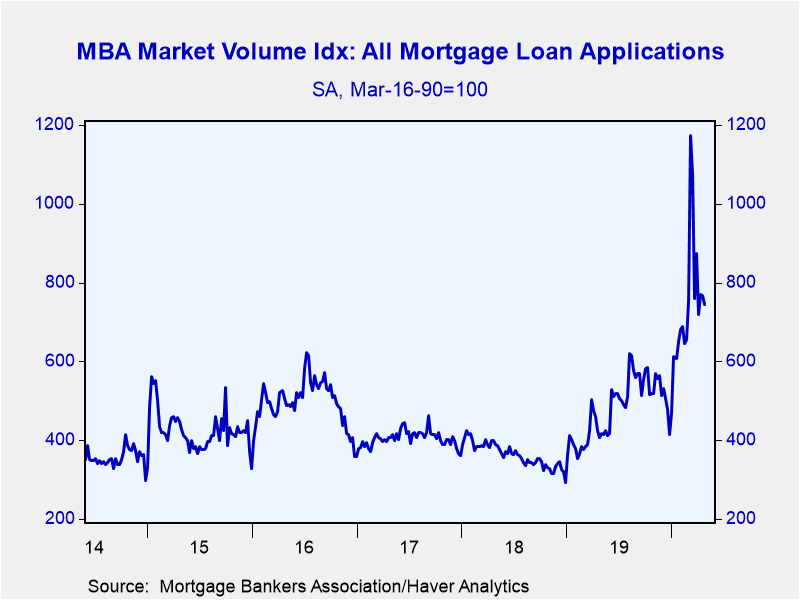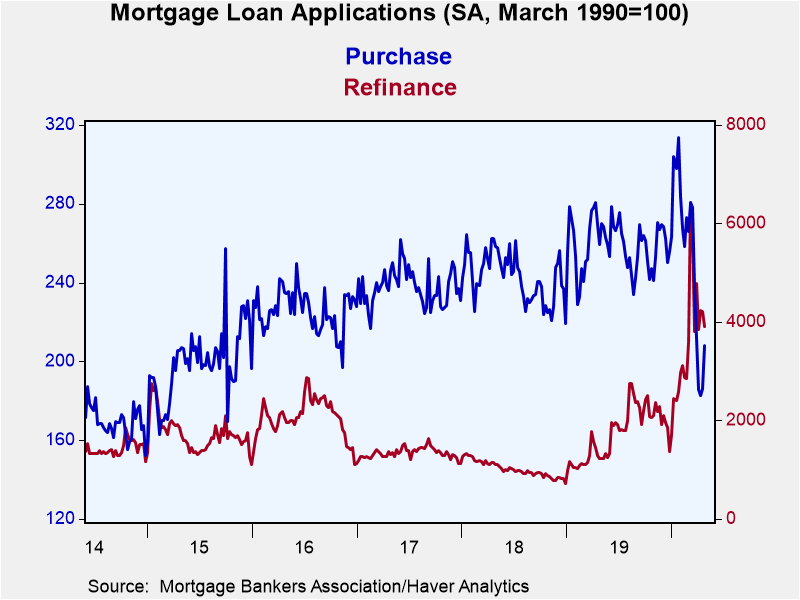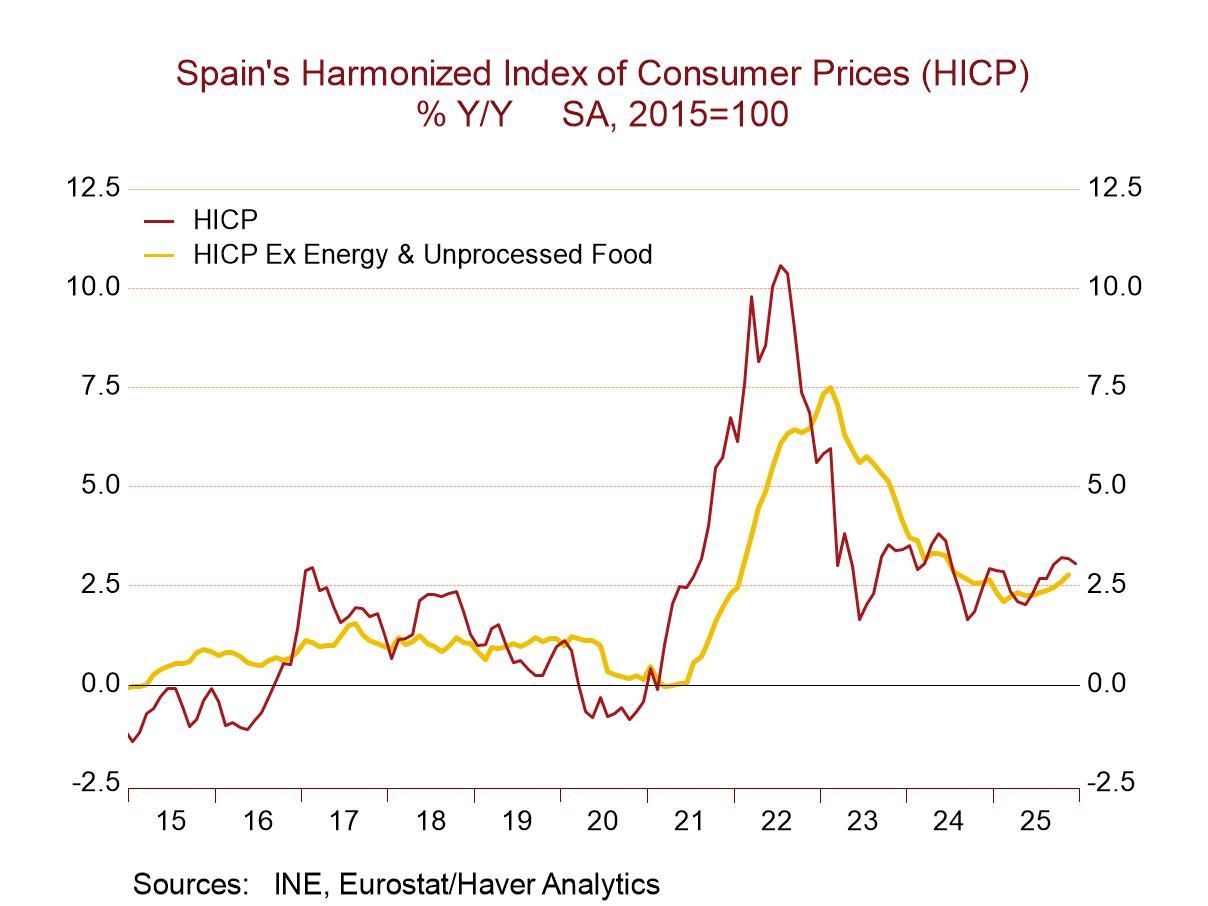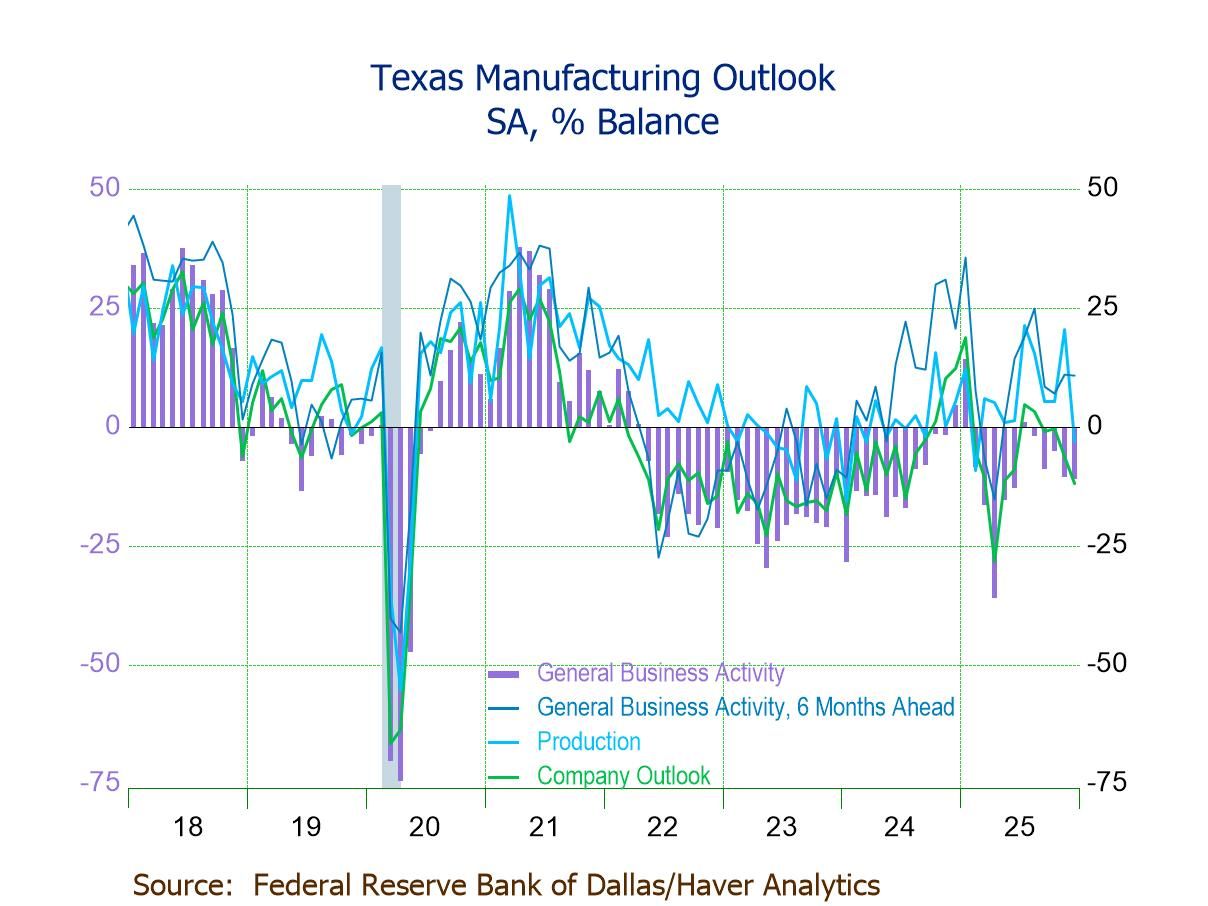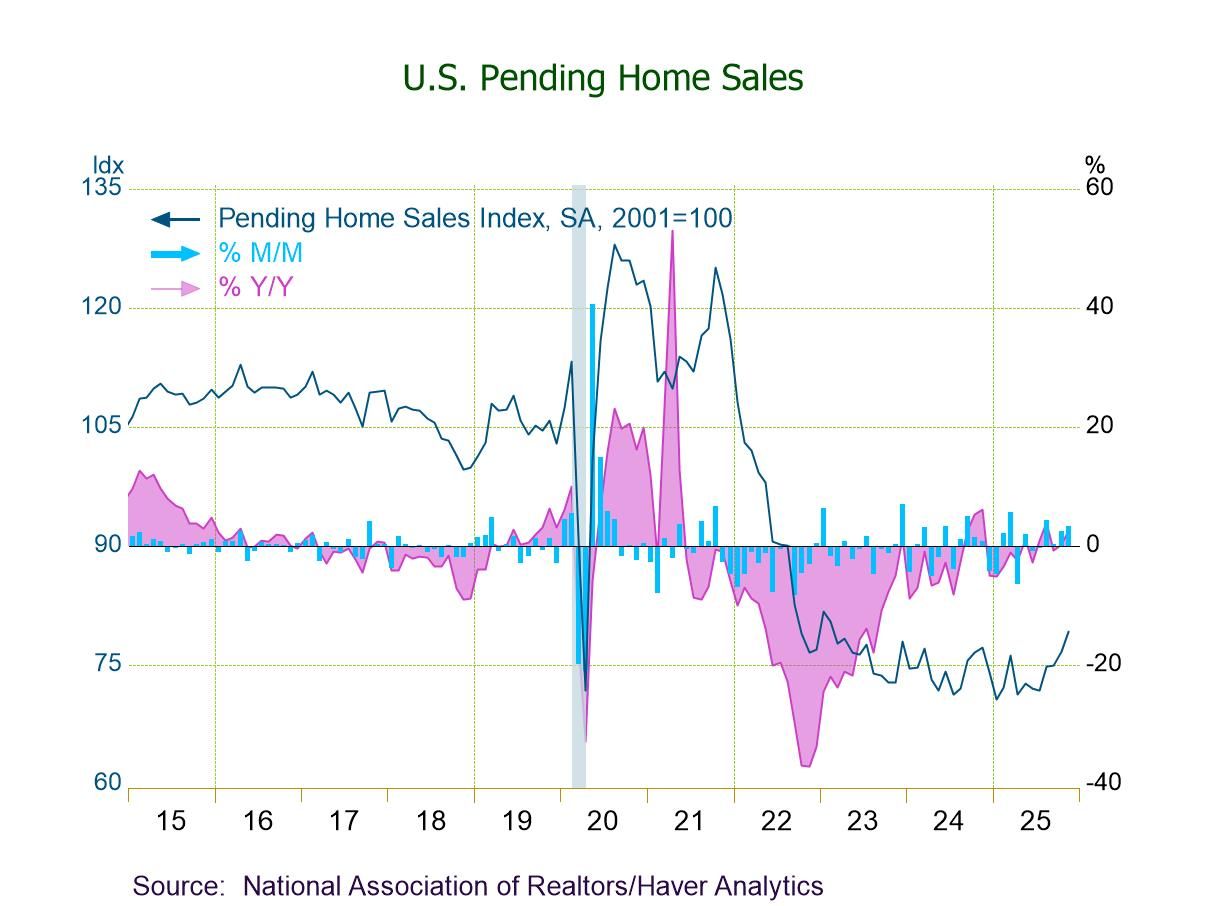 Global| Apr 29 2020
Global| Apr 29 2020U.S. Mortgage Applications and Interest Rates Fall
by:Sandy Batten
|in:Economy in Brief
Summary
• Financing rates at or near record lows. • The housing market is weak but may be seeing first signs of springtime revival. The Mortgage Bankers Association reported that its Mortgage Loan Application Index fell 3.3% w/w (+72.2% y/y) [...]
• Financing rates at or near record lows.
• The housing market is weak but may be seeing first signs of springtime revival.
The Mortgage Bankers Association reported that its Mortgage Loan Application Index fell 3.3% w/w (+72.2% y/y) in the week ended April 24 after a 0.3% w/w decline in the previous week. Applications for purchase rose for the second week, jumping 11.6% w/w (-20.2% y/y) as they recover from a nearly five-year low. The ten largest states each reported an increase in purchase applications, which could be the first signs that the spring homebuying season, delayed by the coronavirus pandemic, may be gradually reviving. Applications for refinancing fell 7.3% w/w (+217.6% y/y) following a 0.8% w/w decline in the previous week. Refinancing activity is receding from a 10-year high reached at the end of March. The refinancing share of mortgage activity decreased to 71.6% of total applications from 75.4% the previous week. The adjustable-rate mortgage (ARM) share of activity increased to 2.9% of total applications.
The effective interest rate on a 15-year fixed-rate mortgage fell to 3.05% in the week ended April 24 from 3.12% the previous week. The effective interest rate on the 30-year fixed-rate mortgage edged down to 3.53%, a record low for the series which dates back to 1990, from 3.54%. The effective rate on a 30-year Jumbo mortgage dropped to 3.81% from 3.91%. The rate on the 5-year adjustable rate mortgage rose to 3.29% from 3.23%.
The average mortgage loan size rose to $309,200 from $305,800. The average loan size of refinancings increased to $304,100 from $301,600. The average loan size for purchases rose to $321,900 from $318,500.
Home buyers and owners continue to lock in currently low levels of interest rates. Applications for fixed-rate loans increased 89.1% y/y, while applications for adjustable rate loans fell 15.9% y/y.
The survey covers over 75% of all U.S. retail residential mortgage applications and has been conducted weekly since 1990. Respondents include mortgage bankers, commercial banks and thrifts. The base period and value for each index is March 16, 1990=100. The figures for weekly mortgage applications and interest rates are available in Haver's SURVEYW database.
| MBA Mortgage Applications (%, SA) | 04/24/20 | 04/17/20 | 04/10/20 | Y/Y | 2019 | 2018 | 2017 |
|---|---|---|---|---|---|---|---|
| Total Market Index | -3.3 | -0.3 | 7.3 | 72.2 | 32.4 | -10.4 | -17.8 |
| Purchase | 11.6 | 2.1 | -1.8 | -20.2 | 6.6 | 2.1 | 5.6 |
| Refinancing | -7.3 | -0.8 | 10.1 | 217.6 | 71.1 | -24.3 | -34.0 |
| 15-Year Effective Mortgage Interest Rate (%) | 3.05 | 3.12 | 3.11 | 3.91 | 3.71 | 4.35 | 3.59 |
| 30-Year Effective Mortgage Interest Rate (%) | 3.53 | 3.54 | 3.53 | 4.55 | 4.34 | 4.94 | 4.32 |
Sandy Batten
AuthorMore in Author Profile »Sandy Batten has more than 30 years of experience analyzing industrial economies and financial markets and a wide range of experience across the financial services sector, government, and academia. Before joining Haver Analytics, Sandy was a Vice President and Senior Economist at Citibank; Senior Credit Market Analyst at CDC Investment Management, Managing Director at Bear Stearns, and Executive Director at JPMorgan. In 2008, Sandy was named the most accurate US forecaster by the National Association for Business Economics. He is a member of the New York Forecasters Club, NABE, and the American Economic Association. Prior to his time in the financial services sector, Sandy was a Research Officer at the Federal Reserve Bank of St. Louis, Senior Staff Economist on the President’s Council of Economic Advisors, Deputy Assistant Secretary for Economic Policy at the US Treasury, and Economist at the International Monetary Fund. Sandy has taught economics at St. Louis University, Denison University, and Muskingun College. He has published numerous peer-reviewed articles in a wide range of academic publications. He has a B.A. in economics from the University of Richmond and a M.A. and Ph.D. in economics from The Ohio State University.


